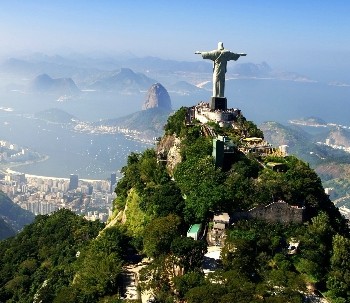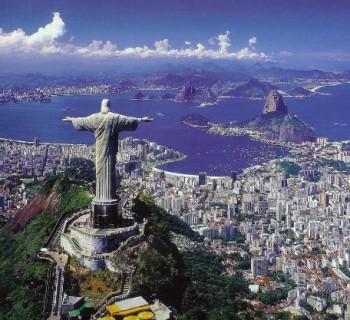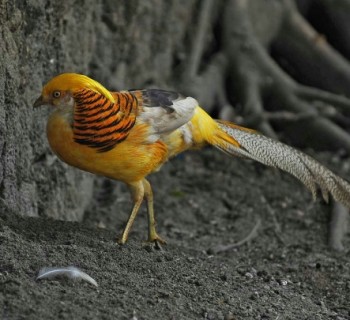Brazil flag
The Brazilian flag is bright green with a yellow diamond in the center. In the middle of the rhombus is a dark blue ball with 27 white five-pointed stars, showing 9 constellations, and a ribbon, also white, that crosses the ball. The motto is written on the tape, which reads "Ordem e Progresso", which in Portuguese means: "Order and progress".
The national flag was legalized at the end of the 19th century, and the colors yellow and green became the symbols of the state. With its forest resources, the Amazon has become a symbolism of green, and huge reserves of gold have become a symbol of yellow.
According to another historical legend, the national colors of Brazil originated: green - from the clothes of the Bragança dynasty. Pedro I was the first emperor of Brazil and belonged to this dynasty. Yellow - from the Habsburgs and their black and gold colors. Empress Maria of Habsbourg was the wife of Pedro I. In 1822, Prince Pedro I, at that time he had not yet become emperor, tore off the blue and white cockade from his headdress and proclaimed that from now on it would be green and yellow. The same year, decrees were signed: the first - confirmed the independence of Brazil, the second - established a new symbolic cockade, where green represented spring, yellow - symbolized gold.
The stars on the flag are positioned on the ball as if viewed from the meridian of Rio de Janeiro, but this arrangement is never visible in the sky. Such a pattern can be seen when observing the stars from outside the firmament. For example, the stars depicting the constellation Scorpio are heavily distorted. The location on the flag next to each other of Shaul and Antares is implausible, in fact, next to the head of the Scorpio is Antares, and at the end of the tail of the Scorpion is Shaula, representing the "sting".
Each star symbolizes the state of Brazil, there are 26 of them in total, and one is dedicated to the Federal District. Each star of a certain size and has its own name, and belongs to some constellation. Five-pointed stars are depicted in five sizes, which consist of 9 constellations. Initially, the number of stars on the flag was 21, but with the addition of states, the number changed.
In 1992, the modern Brazilian flag was officially adopted. By the way, a temporary Brazilian flag, reminiscent of the American flag, existed for several days in 1889..



